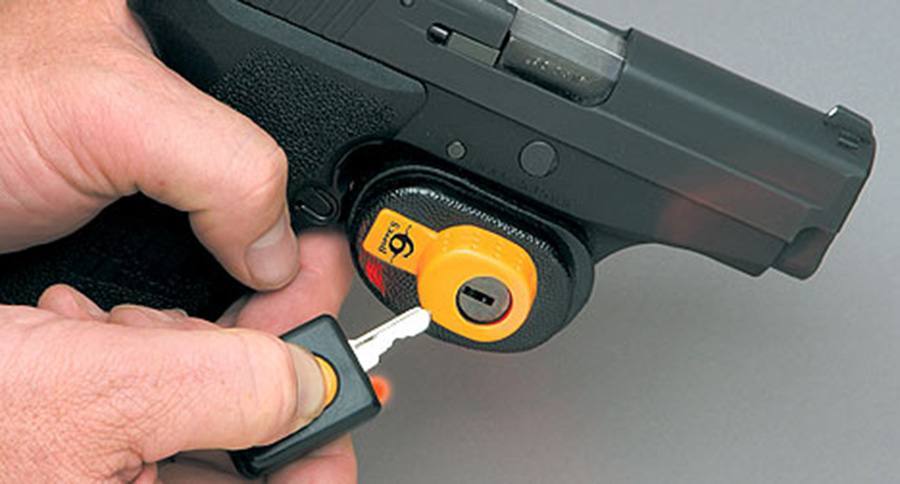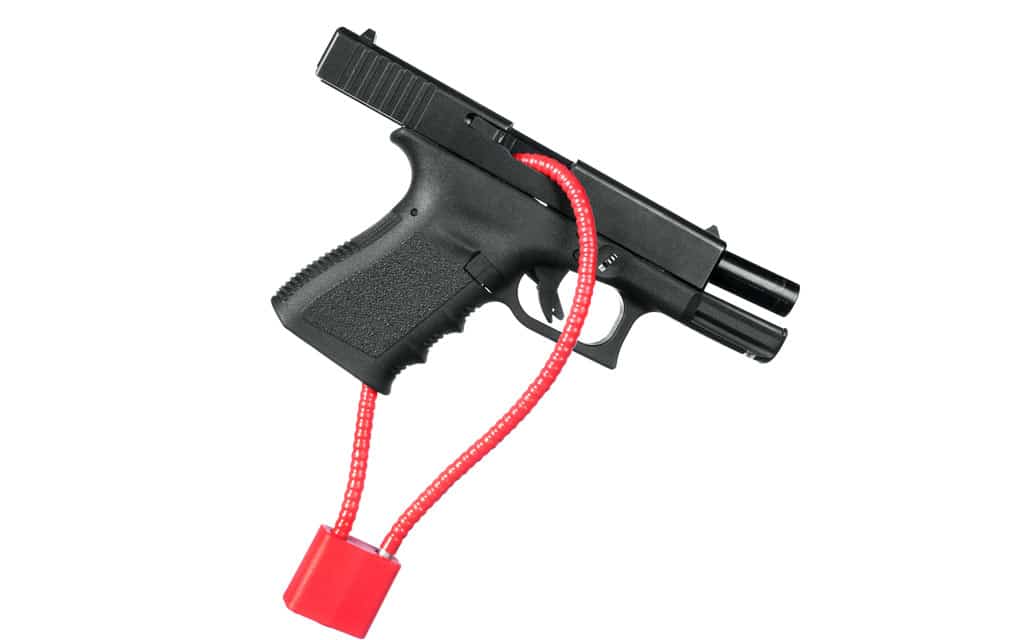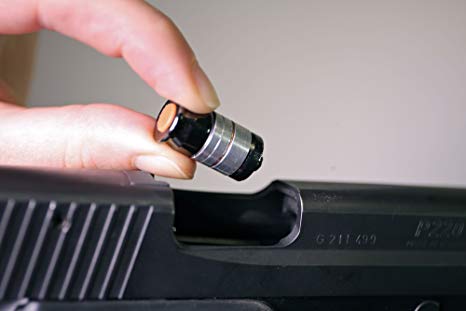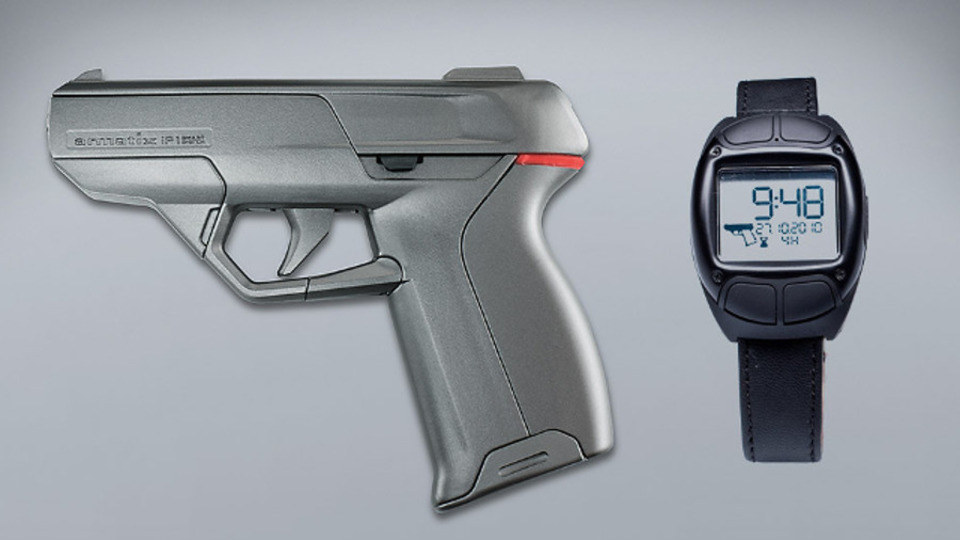Written by Wild Bill on The Prepper Journal.
Editors Note: I posted a contributed article from Jay Chambers of Minute Man Review on gun safety on another site back in September, and I will include a link to that posting at the end of this article. I want to sincerely thank Jay for that article and I respect his goals and reasoning for its content. I have re-written it here to bring it more in line with our audience as most preppers are very safety conscious with weapons and know the potential for accidents is always present. Knowing that is the very first step in being safe when handling guns.
I am stating clearly that I have some differing opinions on the issue of gun safety and I think it has relevance here and now especially when considering that, hopefully a lot of real-life Ralphie’s of the Christmas story fame, will find their first rifle under the tree next week, be it a Red Ryder or a hunting grade weapon after they have already demonstrated their responsibly in the use of their Red Ryder.
I know my Red Ryder was and still remains my favorite Christmas gift from childhood and has been used to introduce a couple of dozen children of relatives, my own two as well, to guns. And it still shoots straight enough to reinforce my posted signs to the neighborhood birds that pooping on my pool deck is a capital offense.
When it comes to weapon safety, it’s not child’s play. Weapons are dangerous objects that should be handled carefully by professionals or experienced safety-conscious citizens. However, there are still accidents happening from lack of proper attention and handling. Can any of this be attributed to the rise in immersion sports like paintball and air-soft and video games such as Call of Duty? Your call. It the distant past we were brought up on TV shows like Roy Rogers or The Rifleman, where the results of gunshots were a stinging hand, or a clutched shoulder with no bleeding. We don’t have a lot of leg to stand on to throw rocks at today’s youth over this from our glass house – OMG! Could I work one more cliche into this sentence?
If Hollywood has done anything right in the past 50 years it has been to take the work of Sam Peckinpah and add more and more reality to it.
Weapon security checks are conducted by professionals in the military in order to ensure that no unwanted incident happens when the gun is used. It is an important part of military training and brings home the reality of having to use guns as the tool of your chosen trade. But what are they and why might professionals need to do them?
What Is a Weapon Security Check?
Basically, being in charge of a weapon means you need to be responsible and vigilant at all times. A gun must be treated like it’s always loaded – having this mindset firmly ingrained may stop you from the improper handling of the weapon, and save someones life and a world of hurt for all involved. The NRA point out, and rightly so, that on every bullet fired rides a lawyer, and every lawyer is always looking for a payday. Never forget that.
Again, some handlers mistakenly believe that the weapon is empty or safe when the reality is different, and the weapon is actually ready to fire. Other accidents may occur due to mechanical failures.
In order to avoid these things from happening, you need to perform a professional-level weapons security check or have a trusted gun smith perform one for you, especially when you have pumped a lot of rounds through it. A lot of preppers are qualified to do this as they may have served in the military and received the training and they not only upgrade weapons, beyond adding a Picatinny Rail or attaching a weapons light, but build out 80% lowers and fine tune gas tube systems, but ask yourself, can you see whether there are worn or broken parts in the sear, trigger or hammer/striker?

If these are worn or damaged, there is a chance they could give a weapon a very sensitive trigger.
How Do YOU Perform a Security Check work?
Here is how weapons should be checked to make sure they are secure:
- Pointing it in a safe direction – ALWAYS
As expected, the gun needs to be pointed in a safe direction, ALWAYS. Basically, you need to ask yourself if someone would get hurt if they stayed in its range and it went off. If the answer is “yes”, then it should be pointed in another direction or the people in your inspection area should be removed, asked to leave while you do this.
- Remove the Ammunition
All ammunition needs to be removed so there is no risk of getting hurt or harming someone else. A firearm that contains cartridges could have them in two possible places: the chamber and the magazine.
- Check the chamber
Although you just emptied it, you need to make sure that the chamber is truly empty. Accidents occur when people don’t properly check the chamber, and they are harmed or die as a result. Don’t just assume it’s empty because you emptied it – check it again.
- Verify the Feed Path
The next step is verifying the path that the cartridge follows from the magazine to the chamber. On firearms with tubular magazines, you need to ensure that the magazine follower is visible at the end of the magazine tube. Semi-automatic handguns and rifles should be inspected for stuck cartridges after the magazine has been removed. Rifles in particular for an open bore, and locked open bolt and no magazine, not even an empty one so your view is clear.
- Check the Bore for Obstructions
There’s huge pressure used to expel a bullet out of the barrel. As a consequence, the barrel may not allow the aerodynamic pressure build behind the bullet to safely be released. It can end in an explosive rupture.
There are some re-loaders that make squib rounds, reducing the powder charge so they can test or practice in the basement of their home, their yard or their workshop. I am not a fan for all the obvious reasons. A failure of the gas-tube in a semi-automatic rifle can be catastrophic. I have been lucky in weapons where I have installed the adjustable gas tubes that the first indication is the spent round does not successfully eject preventing the magazine from feeding the next round. BUT this is because I always start with the adjustable gas tube setting as low as possible and work it up until it is efficient. There is a fine line between seeing the flash of a round vs maximizing the energy to propel a round down range, lawyer on board and all. I like a little flash as a backup reminder that the chamber/barrel is clear.
Also, you should always examine the barrel’s full length by inserting a cleaning rod down the end, in order to prevent an explosive rupture from happening. You could also visually inspect it while the firearm is pointed in a safe direction, free of ammunition, and the bolt locked back.
Could Weapons Be Safely Stored?
There are several ways in which a weapon could be stored. It can either be locked somewhere safe, disassembled or have a lock.

I am a big fan of gun safes for weapons not “on a mission” for two reasons, safety and theft. And by “on a mission” I mean my go-to weapon for home security, my back-up weapons in my BOB, which is secured and my EDC. But I live alone and secure these when I have expected visitors and unexpected visitors, especially if they include children.
As a home protection weapon you need to make your own call. Keeping all your weapons in a safe renders them less useful than harsh language or throwing the family cat at an intruder.
I keep my guns for shooting trap and skeet in a safe, as are my bug-out weapons and a number of handguns that are not my go-to self defense weapons. Here safety has to take into consideration the guns purpose, placement and the people who will have access to it, such as family members. Kids in the house – lock it up and keep the cat handy. Others coming and going like contractors, home care people, service people – chose wisely on on an individual basis.
And while storing a weapon disassembled could also prevent it from being used, especially if the pieces are stored in different locations, I am of the opinion that this is overkill. And of course there are certain locks that can be used to prevent the weapon from discharging. They come in several types: cable locks, trigger locks, smart guns, and chamber locks.


Trigger locks prevent the trigger from being manipulated, my experience is that getting a secure fit with one is more luck than skill as they designed for an array of weapons from a sales point and it you have changed to a competition trigger, or made any modifications you may not get the security you are seeking. Your experience may be different.

Most of the more modern weapons I have purchased came with Cable locks, and these generally work. All of my cable locks are in the weapons original box still, as I don’t add these to guns already in a safe. A personal choice, and a key ring that would look like I am the Key Master in a medieval adventure.


Chamber locks prevent the weapon from being loaded with ammunition. If you wonder how these locks can be removed in order to use the gun, don’t worry – they come without a key. I have seen many a video on the bio-metric locks that show how well they work. I also use one four (4) times daily to move in and out of work and it occasionally works on the first try. It is used by others so it gets a lot of fingers, not always clean ones, so maybe an unfair comparison, but it is my experience. I have people I trust who swear by them, people with small children at home. They are exercising their own good judgement.

Then there are the “smart” guns, which come with built-in locks, such as microchip implants, fingerprint recognition or magnetic rings (the Magna-Trigger system was developed by Joe Davis in 1975 for J-, K-, L-, & N-frame Smith & Wesson revolvers prevents the trigger from returning far enough to fire. It has proven reliable. This system will work ambidextrously, provided the magnetic rings used are worn on both hands). Many police agencies experimented with these as the fear of a suspect taking an LEO’s weapon and using on it on them is a real concern. Have you ever seen one in use? I worked on a grant from the National Institute of Justice (NIJ) on transitioning Department of Defense technologies to the Public Safety sector for three years and never came across an officer that thought these practical. However, as a gun owner, it is something you should know exists and may provide you with another level of confidence.
Anything with a micro-chip can be tampered with, anything. As a prepper I see smart guns as back-door to implement gun control. Get them in every gun and then disable the chip when you take control. Nope.
Professional Weapon Security Check?
I say yes on the gunsmith review for possibly worn parts. Even though I have done a lot of my own gunsmith work and can recognize worn parts, I have had two guns in my inventory, both handguns and from manufactures with excellent reputations, that have malfunctioned repeatedly. Both were sent back to the factories and were returned in no better working order than when I mailed them and both have had a half-dozen professional gun smiths look at them as well. Too small to turn into anchors, two dangerous looking to make paper-weights – does anyone even need paper-weights anymore? Both now take up space in my safe and only serve as lessons learned when purchasing.
These weapons need to be disposed of properly, so they don’t injure anyone. But what does that mean? I would never “turn them in” to any buy-back program run by a government agency. My friends would disown me, and rightfully so.
Conclusion
Weapons are not toys, they are never not loaded until YOU yourself have inspected them, and they must never be pointed at anything you do not want to injured or kill. Simple rules but we can get caught up in the moment. I always try and think of a weapon as a live venomous snake that will bite anything it can touch with its business end. When hunting or at the range I am every bit as conscious of how others around me are handling their weapons. I have been barrel-swept far too many times at a number of ranges and I am a jerk about it.
Guns are tools. They have a purpose and a place in every law abiding citizens household. They provide food for the hunters table, safety for those paid to protect us, safety for we who can’t wait for others to save us, and serve as an equalizer when faced with larger threat. Yes, they should be kept out of the hands of many but to date, how to do that is still the stuff of political agendas as opposed to individual responsibility.
Be safe out there.
The original article: Weapon Safety: What Is a Weapon Security Check and Why Does a Professional Need to Do it?
Follow The Prepper Journal on Facebook! (even though this article would get me a cell in Facebook jail if I were to post it there.)
The post Weapon Safety: What Is a Weapon Security Check and Does a Professional Need to Do it? appeared first on The Prepper Journal.
from The Prepper Journal
Don't forget to visit the store and pick up some gear at The COR Outfitters. How prepared are you for emergencies?
#SurvivalFirestarter #SurvivalBugOutBackpack #PrepperSurvivalPack #SHTFGear #SHTFBag














No comments:
Post a Comment